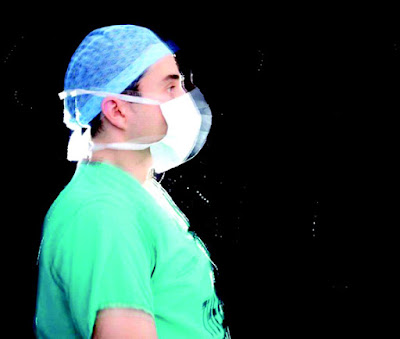The "Six Feet Away" Rule is Woefully Inadequate
“...the rapid international spread of COVID-19 suggests that using arbitrary droplet size cutoffs may not accurately reflect what actually occurs with respiratory emissions, possibly contributing to the ineffectiveness of some procedures used to limit the spread of respiratory disease” (Bourouiba, 2020).
Dr. Lydia Bourouiba has published an important paper that updates 1930s-era models of respiratory infectious disease transmission based on the size of droplets emitted when a person breathes or talks or coughs or sneezes. Large droplets were thought to contaminate the area immediately surrounding an infected individual, because they settle before evaporating. In contrast, small droplets evaporate quickly and form residual particulates, or aerosols. However, the classification of droplet size (and therefore the mode of transmission) is not based on modern science. Yet this scheme still informs public health policy to this day.
The figure above shows a Multiphase Turbulent Gas Cloud From a Human Sneeze (Bourouiba, 2020). The puff trapped droplets of many sizes and carried them quite a long distance (23-26 feet!) while evading evaporation. Droplets that settle can contaminate surfaces. Aerosols may persist in the air for hours, depending on ambient temperature and humidity, as well as prevailing winds or airflow of indoor ventilation systems.1
Watch the educational video showing Respiratory Pathogen Emission Dynamics and you will be truly horrified!!
“This newer understanding of respiratory emission dynamics has implications for mask and respiratory design, social distancing recommendations, and other public health interventions during and after the COVID-19 pandemic.”
Speaking of masks, droplets are visible after sneezing into a surgical mask (Granville-Chapman & Dunn, 2007). Although the paper was a light-hearted study appearing in the Christmas issue of BMJ, the spread of respiratory droplets is no longer a joke.
Footnote
1 A recent report by investigators in Singapore suggested the possibility of significant environmental contamination (including air vents) in the hospital rooms of SARS-CoV-2 patients (). The air samples themselves were negative, however. And standard cleaning procedures effectively decontaminated surfaces.
ADDENDUM (March 28, 2020): @SamWangPhD rightfully pointed out that sneezing is not a symptom of coronavirus-19 infection. My initial reply was that an asymptomatic individual could be strolling through a park and sneeze due to allergies. On a more scientific note, it's true that the COVID-19 symptom of coughing isn't as violent as sneezing. However:
"droplets of diameter 30 µm can have a horizontal range of up 2.5 m away from the cougher due to cloud dynamics."
References
Bourouiba L (2020). Turbulent Gas Clouds and Respiratory Pathogen Emissions: Potential Implications for Reducing Transmission of COVID-19. JAMA March 26.
Granville-Chapman J, Dunn RL. (2007). Excuse me! BMJ 335:1293.
Ong SW, Tan YK, Chia PY, Lee TH, Ng OT, Wong MS, Marimuthu K. (2020). Air, surface environmental, and personal protective equipment contamination by severe acute respiratory syndrome coronavirus 2 (SARS-CoV-2) from a symptomatic patient. JAMA March 4.
Subscribe to Post Comments [Atom]
















